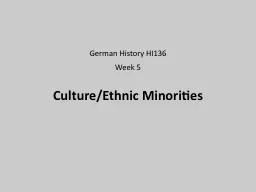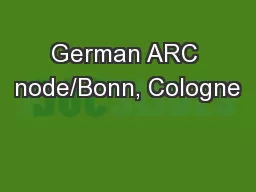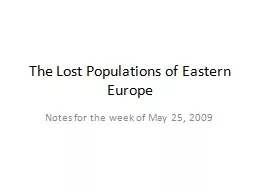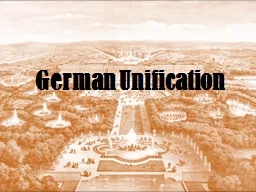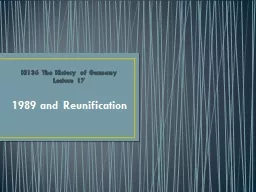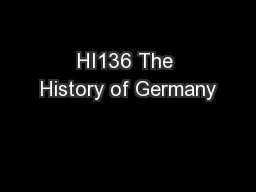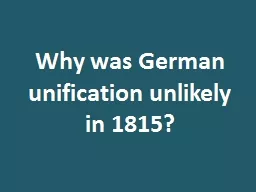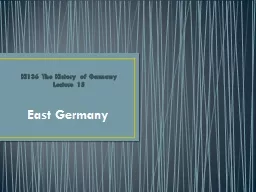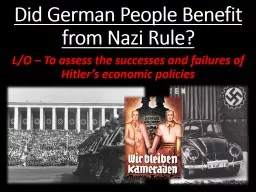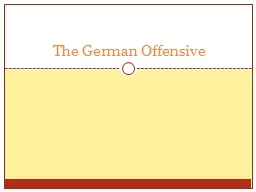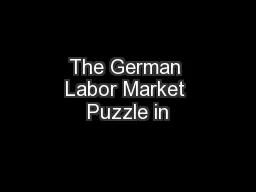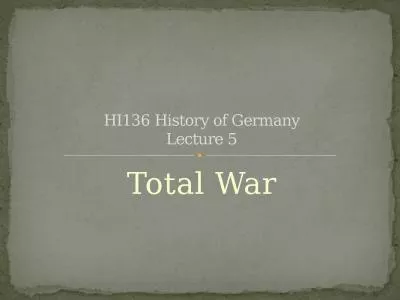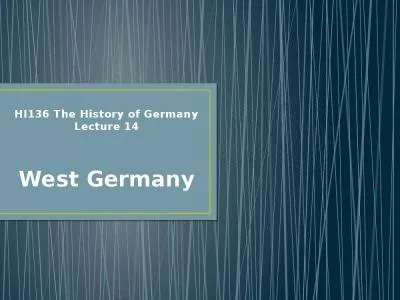PPT-German History HI136
Author : liane-varnes | Published Date : 2016-04-24
Week 5 CultureEthnic Minorities Cultural Change Heinrich Mann 18711950 Professor Unrat 1905 Der Untertan 1918 Freie Volksbühne free peoples theatre established
Presentation Embed Code
Download Presentation
Download Presentation The PPT/PDF document "German History HI136" is the property of its rightful owner. Permission is granted to download and print the materials on this website for personal, non-commercial use only, and to display it on your personal computer provided you do not modify the materials and that you retain all copyright notices contained in the materials. By downloading content from our website, you accept the terms of this agreement.
German History HI136: Transcript
Download Rules Of Document
"German History HI136"The content belongs to its owner. You may download and print it for personal use, without modification, and keep all copyright notices. By downloading, you agree to these terms.
Related Documents

